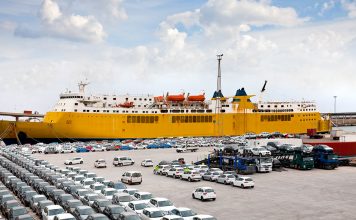The Ministry of Transport and Infrastructure is planning to install Intelligent Video Surveillance Cameras at 300 major junctions in Nairobi County. The cameras will aid in easing traffic congestion in the city, reducing accidents, air pollution and eliminating fraud.
The cameras used will be able to detect and record motorists’ behaviour on the road, capture the pictures of both the car and the driver, offence committed, details of the offence such as place and time as well as the car’s registration number.
The information captured will then be relayed to two command centres located at the Kenya Urban Roads Authority (KURA) offices and Mombasa Road. the centres will receive the data and send a message to the offender to their mobile phone number registered on the Transport Integrated Management System (TIMS)
With a smart Card Driver licence, there will be alignment on information including the Vehicle Registration, Driver’s licence and Traffic Violations data.
The two centres will house staff consisting of traffic police, traffic engineers, system specialists and county traffic controllers. Their mandate will be to monitor the surveillance camera 24 hours a day.
Proposed fines include Sh 5,000 for Public Service Vehicles (PSVs) driving on pavements or pedestrian walkways, Sh 3,000 for reversing at the wrong place, Sh 3,000 for failing to obey traffic lights or failing to stop when the light turns red and between Sh 500 to Sh 10,000 for speed violation. Other offences include parking violations, wrong lane change, yellow line occupation and illegal turn.
Pedestrians will also be fined for disregarding traffic rules, walking in or crossing a road with traffic and for not using a Zebra Crossing.
The government projects that it will collect fines worth more than Sh 3 billion per year for a single camera
The project costs about Sh 30 billion including installation of the cameras, improvement of the road junctions’ geometry and implementation of the Bus Rapid Transit Line Five. The government says the fines collected will be used in operating and maintaining the gadgets.
Infrastructure Principal Secretary Paul Maringa told the Senate Committee on National Cohesion and the ITS Project that it is divided into three phases. The ITS Project will cater for 25 junctions and the second 75 junctions, all of which will worked on by a Korean Company in conjunction with the National Government. In a deal signed in 2018, the Korean government will extend a loan to fund the first two phases.
A Chinese company is also in talks with the government to fund a 125 junctions at a cost of Sh 20 billion. The project is already being piloted on seven road junctions with high traffic congestion . The first phase also includes installation of modern traffic signalization systems, traffic counters and video surveillance cameras.
“The system collects 24-hour real time traffic data including turning movements and analysis, which is used in continuous improvement of the system, traffic analysis and forecasting for future planning and management of our roads,” the PS added. The second phase will cater to improvement of geometry and installation of ITS facilities for the 75 junctions.
The electronic enforcement measures on traffic violations on lights and speed limit is expected to save the country of a loss of at least Sh 50 million daily in congestion of traffic in the city. This translates to a loss Sh 18.25 billion annually. The system will also guide motorists on available parking spots and routes to take in the event of accidents and flooded roads during the rainy season.
Matatu Owners Association Simon Kimutai lauded the developments saying the system was long overdue. He pointed out that Kenyans spend a lot f time and fuel on the roads due to traffic congestion in the city.
“We welcome the system if it can remove policemen from our roads for drivers to carry their own cross. It will also end the issue of PSV drivers being accused of bribing police officers from time to time,” said Kimutai.
SOURCE: kahawatungu.com



![Top 20 Used Cars to Avoid Buying in Kenya – [PHOTOS]](../../../blog/wp-content/uploads/2013/11/top-used-unreliable-cars-to-avoid2-80x60.jpg)


![Top 20 Used Cars to Avoid Buying in Kenya – [PHOTOS]](../../../blog/wp-content/uploads/2013/11/top-used-unreliable-cars-to-avoid2-100x70.jpg)



